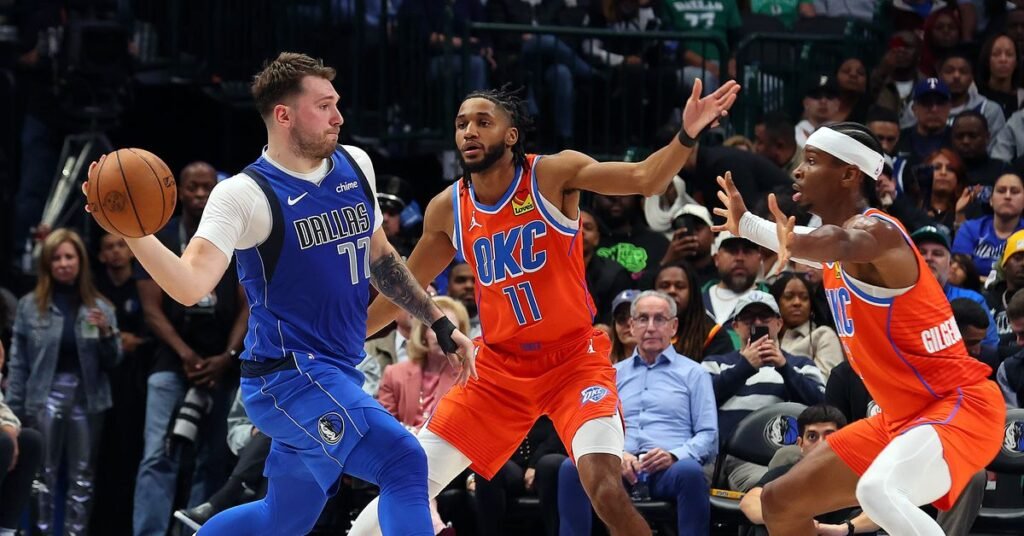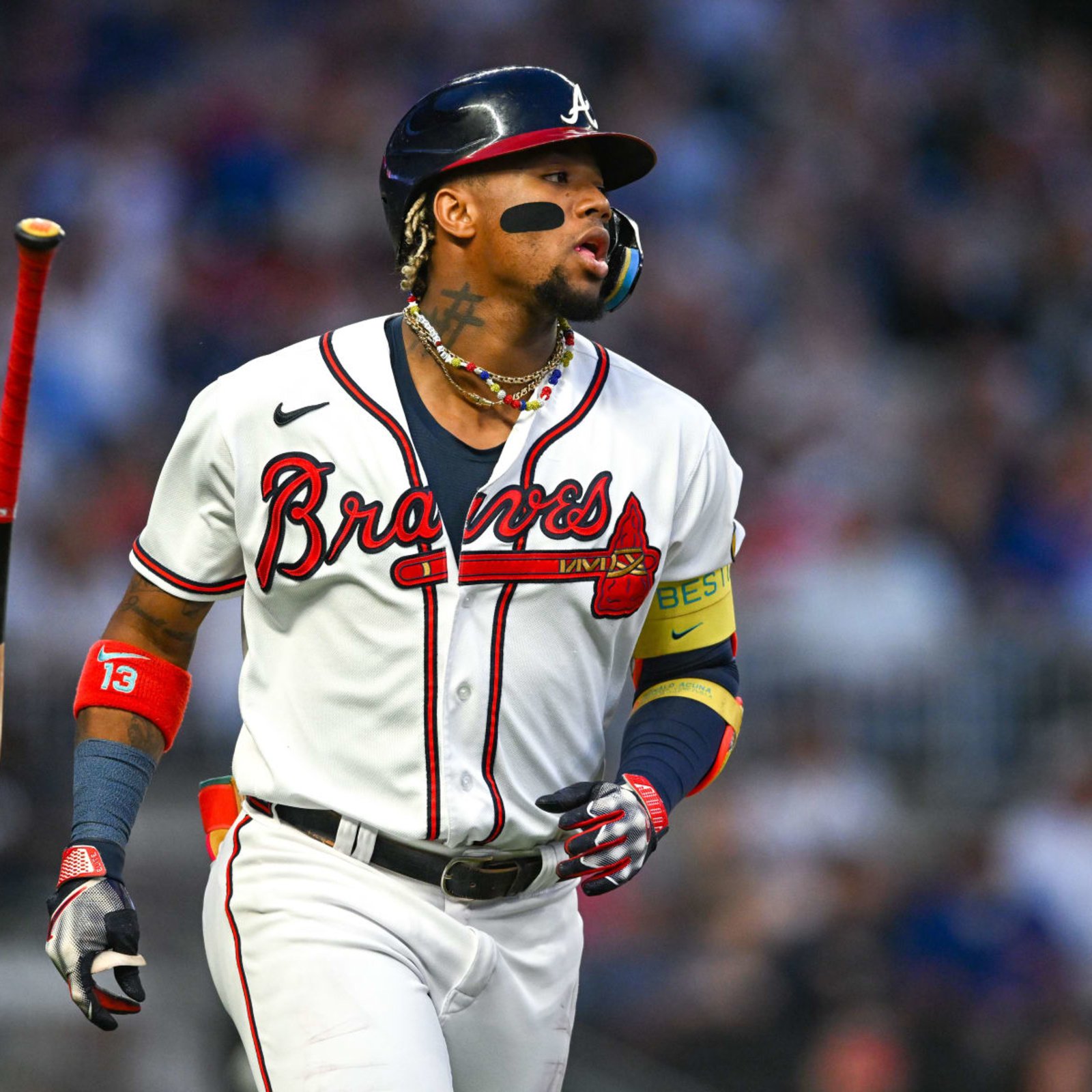Sport
dallas mavericks vs okc thunder match player stats

Introduction: Mavericks vs. Thunder Rivalry
The rivalry between the Dallas Mavericks and the Oklahoma City Thunder has grown steadily since the early 2010s when both teams were playoff contenders in the Western Conference. While the Mavericks have an NBA Championship under their belt (2011), the Thunder have built a reputation as one of the most promising young teams in the league. This matchup pits the Mavericks’ experience and superstar firepower against the youthful energy and talent of the Thunder.
Both teams have made significant changes over the past few years, but the essence of their rivalry remains. With both franchises in playoff contention this season, the latest showdown was highly anticipated, offering a glimpse into how they stack up against each other.
First Quarter: A Fast Start by the Mavericks

The Mavericks came out strong in the first quarter, led by Luka Dončić, who quickly set the tone with his playmaking and scoring. Dončić, known for his ability to control the tempo of the game, dominated the quarter with his signature step-back three-pointers and pinpoint assists. He ended the quarter with 12 points, 4 assists, and 3 rebounds.
Kyrie Irving also contributed early with aggressive drives to the basket, putting pressure on the Thunder defense. His ability to create offense in isolation situations was crucial in helping the Mavericks build an early lead. Irving’s partnership with Dončić continues to evolve, and this game was no exception, as they combined for 20 points in the first quarter.
For the Thunder, Shai Gilgeous-Alexander (SGA) countered with his own offensive prowess. The young guard demonstrated why he’s one of the league’s rising stars, attacking the rim relentlessly and drawing fouls. Despite the Mavericks’ lead, SGA kept the Thunder within striking distance, ending the first quarter with 10 points and 3 assists.
Key Stats:
Luka Dončić: 12 points, 4 assists, 3 rebounds
Kyrie Irving: 8 points, 2 assists
Shai Gilgeous-Alexander: 10 points, 3 assists
Second Quarter: Thunder’s Defense Steps Up
The second quarter saw the Thunder tightening up their defense, with Josh Giddey and Chet Holmgren playing key roles in contesting shots and protecting the paint. Holmgren, the highly anticipated rookie, showcased his shot-blocking ability, rejecting multiple Maverick attempts at the rim. Giddey, known for his basketball IQ, was pivotal in orchestrating fast breaks and finding open teammates for easy baskets.
On the offensive end, the Thunder’s role players stepped up, with Luguentz Dort hitting timely three-pointers and Jalen Williams providing energy on both ends of the floor. The Thunder managed to close the gap by halftime, with the Mavericks holding a slim lead.
The Mavericks, while still in control, found it harder to score in the second quarter. Dončić faced double teams, forcing him to rely on his teammates. Tim Hardaway Jr. came in clutch with perimeter shooting, keeping Dallas ahead despite the Thunder’s defensive surge.
Key Stats:
Luka Dončić: 18 points, 7 assists
Josh Giddey: 6 points, 5 rebounds, 4 assists
Chet Holmgren: 3 blocks, 6 rebounds
Third Quarter: A Back-and-Forth Battle
The third quarter was a more balanced affair, with both teams trading baskets. SGA continued to be the focal point of the Thunder’s offense, scoring with ease both in the mid-range and at the rim. His ability to navigate through defenses and create scoring opportunities for himself and others made him a constant threat. By the end of the third, he had accumulated 25 points and 6 assists.
On the Mavericks’ side, Irving took over the scoring load while Dončić focused more on facilitating. Irving’s crossover dribbles and step-back jumpers were on full display, frustrating Thunder defenders. Irving ended the quarter with 22 points, complementing Dončić’s 23.
The Thunder also received a boost from their bench, with Isaiah Joe and Aaron Wiggins contributing valuable minutes. Their energy helped Oklahoma City tie the game heading into the final quarter, setting up a thrilling conclusion.
Key Stats:
Kyrie Irving: 22 points, 3 assists
Shai Gilgeous-Alexander: 25 points, 6 assists
Isaiah Joe: 8 points off the bench
Fourth Quarter: Luka’s Late-Game Heroics
The fourth quarter belonged to Luka Dončić, who put on a clinic in clutch-time scoring. With the game on the line, Dončić hit several tough shots, including a deep three-pointer that put the Mavericks up by 5 with just under two minutes to play. His playmaking was also on display, as he found open shooters in the corners, leading to critical baskets by Hardaway Jr. and Grant Williams.
The Thunder, however, refused to back down. SGA hit a crucial three-pointer to cut the Mavericks’ lead to two points with 30 seconds remaining. Giddey also made a key defensive stop, but the Thunder couldn’t convert on their final possession, sealing the win for Dallas.
The Mavericks’ victory highlighted their experience and star power, with Dončić finishing the game with 35 points, 10 assists, and 9 rebounds, just shy of a triple-double. Irving added 28 points, while Hardaway Jr. contributed with 15 points off the bench.
For the Thunder, Gilgeous-Alexander finished with 33 points and 7 assists, while Giddey posted an all-around stat line of 12 points, 8 rebounds, and 7 assists. Despite the loss, the Thunder showed resilience and potential, particularly with their young core continuing to develop.
Final Stats:
Luka Dončić: 35 points, 10 assists, 9 rebounds
Kyrie Irving: 28 points, 4 assists
Tim Hardaway Jr.: 15 points
Shai Gilgeous-Alexander: 33 points, 7 assists
Josh Giddey: 12 points, 8 rebounds, 7 assists
Chet Holmgren: 5 blocks, 10 rebounds
Key Takeaways
1. Luka Dončić’s MVP-Level Performance
Dončić once again proved why he’s one of the NBA’s top players. His ability to take over games in crunch time, combined with his elite playmaking, makes him a unique talent. His near triple-double performance was crucial in securing the win for the Mavericks.
2. Kyrie Irving’s Scoring Prowess
Irving’s offensive ability complements Dončić perfectly. When the Mavericks needed a secondary scorer, Irving stepped up, particularly in the third quarter when the game was tight. His shot-making ability makes the Mavericks’ offense hard to stop.
3. Thunder’s Young Core Shows Promise
Despite the loss, the Thunder’s young core continues to impress. SGA is evolving into a perennial All-Star, while Giddey’s versatility is a significant asset. Chet Holmgren’s defense, particularly his shot-blocking, adds a new dimension to the Thunder’s defense.
4. Defense Wins Games
Both teams had their moments defensively, but the Mavericks’ ability to get key stops in the final minutes made the difference. Holmgren’s shot-blocking and Giddey’s defense kept the Thunder competitive, but they couldn’t contain Dončić when it mattered most.
Conclusion
The Dallas Mavericks’ victory over the Oklahoma City Thunder was a showcase of star power and youthful potential. While the Mavericks relied on their experienced superstars in Luka Dončić and Kyrie Irving to secure the win, the Thunder’s young core continues to grow and impress. Shai Gilgeous-Alexander’s scoring and leadership, combined with Josh Giddey’s all-around game, ensure that the Thunder will be a force in the Western Conference for years to come.
As these two teams continue to evolve, their matchups will only get more exciting, with both franchises pushing for playoff success. The Thunder may have lost this battle, but their future is undoubtedly bright. On the other hand, the Mavericks’ win reinforces their position as a contender in the West, especially with Dončić playing at an MVP level.
For more detailed analysis and updates on the next Thunder vs. Mavericks matchup, stay tuned to NBA platforms and sports analytics sites like..
Share this content:
Sport
Sport Climbing Combined: A Thrilling Addition to the Olympics

Sport climbing has emerged as one of the most electrifying additions to the Olympic Games. Combining elements of speed, technique, and endurance, this dynamic sport captivated audiences when it made its debut at the 2020 Tokyo Olympics. Now, the “combined format” is gearing up to make waves in future competitions. In this blog, we’ll delve into what sport climbing combined entails, its unique appeal, and how it is reshaping the Olympic landscape.
What is Sport Climbing Combined?
The “combined” event in sport climbing is a fusion of three distinct disciplines: speed climbing, bouldering, and lead climbing. Each tests different physical and mental attributes, making the format both challenging for athletes and exhilarating for spectators. Here’s a breakdown of each discipline:
Speed Climbing: Two climbers race side-by-side on a standardized vertical wall, aiming to reach the top in the shortest time possible. It’s all about explosive power and precision.
Bouldering: Athletes attempt to solve complex climbing puzzles on shorter walls without ropes. They have a limited number of attempts to complete as many “problems” as possible within a set time.
Lead Climbing: Climbers aim to ascend as high as possible on a much taller wall within a time limit, using a rope for safety. This discipline emphasizes endurance and strategic thinking.
The combined format challenges athletes to excel across all three, showcasing their versatility and resilience.
The Evolution of Sport Climbing in the Olympics
Sport climbing made its Olympic debut in 2020 with a single combined event. While the format was thrilling, it received criticism for forcing athletes to compete in disciplines they might not specialize in. For example, speed climbers, who thrive on quick bursts of energy, had to compete in bouldering and lead climbing, which require different skills.
In response, the International Federation of Sport Climbing (IFSC) revised the format for the 2024 Paris Olympics. Now, there will be two separate events:
A speed-only event to highlight specialists.
A bouldering and lead combined event for athletes with all-around skills.
This change aims to better balance the competition and spotlight the diverse talents within the sport.
What Makes Sport Climbing Combined Unique?

1. Diversity of Skills: Sport climbing combined is a true test of an athlete’s versatility. Mastering speed, problem-solving, and endurance requires an incredible range of skills. It’s akin to asking a sprinter to also excel in hurdles and long-distance running.
2. Dynamic and Unpredictable: With three distinct disciplines, the combined format keeps audiences on the edge of their seats. A climber might dominate in one event but falter in another, leading to dramatic shifts in rankings.
3. Global Appeal: Sport climbing draws inspiration from outdoor climbing, a globally popular activity. Its inclusion in the Olympics introduces millions of viewers to the excitement of competitive climbing.
4. Youthful Energy: With its fast-paced action and focus on agility, sport climbing appeals to younger audiences, aligning with the Olympics’ push to stay relevant to new generations.
Key Athletes to Watch
As sport climbing gains prominence, several athletes have become household names. Here are a few standout climbers:
Janja Garnbret (Slovenia): Often referred to as the “Queen of Climbing,” Janja won gold in Tokyo and dominates both bouldering and lead climbing.
Adam Ondra (Czech Republic): A legend in the climbing world, Adam’s exceptional technique and versatility make him a strong contender in the combined format.
Natalia Grossman (USA): Known for her bouldering prowess, Natalia is one of the rising stars in the sport.
Bassa Mawem (France): A speed climbing specialist, Bassa represents the explosive power and precision needed for this discipline.
Training for Sport Climbing Combined
Training for the combined format is no small feat. Athletes must juggle the demands of three vastly different disciplines:
Physical Conditioning: Speed climbing requires explosive strength, while bouldering emphasizes core power and agility. Lead climbing, on the other hand, demands exceptional endurance.
Mental Focus: Bouldering problems often involve solving complex moves under pressure, requiring athletes to think quickly and strategically.
Time Management: With limited time to train, athletes must prioritize improving their weaker disciplines while maintaining their strengths.
The dedication and discipline required make these climbers some of the most well-rounded athletes in the world.
The Future of Sport Climbing in the Olympics
The introduction of a speed-only event and a bouldering/lead combined event in Paris 2024 marks a significant step forward for sport climbing. These changes address the concerns raised in Tokyo and allow specialists to shine in their respective disciplines. The revised format also ensures fairer competition and more excitement for fans.
Looking beyond 2024, sport climbing has the potential to grow even further. The sport’s accessibility—climbing walls can be found in gyms worldwide—and its connection to outdoor climbing give it a unique advantage in attracting new participants. Additionally, the inclusion of more diverse events, such as team-based competitions, could further enhance its Olympic presence.
Why Sport Climbing Combined Matters
Sport climbing combined is more than just a test of athleticism; it’s a celebration of the human spirit. It challenges athletes to push their limits, adapt to new challenges, and persevere under pressure. For spectators, it offers a thrilling mix of speed, strategy, and spectacle.
As the sport continues to evolve, its inclusion in the Olympics serves as a reminder of the Games’ ability to adapt and embrace new traditions. Sport climbing combined is a perfect example of how modern sports can captivate audiences while honoring the timeless values of determination and excellence.
Sport climbing combined has redefined what it means to compete in the Olympics. With its blend of physical prowess, mental agility, and raw excitement, it’s no wonder the sport has quickly become a fan favorite. As we look forward to future Games, one thing is certain: sport climbing is here to stay.
Share this content:
Sport
India vs. South Africa: A Historic Rivalry in Cricket

The cricketing rivalry between India and South Africa is one of the most captivating in the sport’s history. From their first encounter in 1991 to the recent T20 World Cup final in 2024, these two teams have delivered numerous memorable matches. This blog delves into the evolution of their rivalry, highlighting key matches and their significance.
Early Encounters and the Dawn of a Rivalry
South Africa’s re-entry into international cricket in 1991 marked the beginning of their on-field battles with India. The inaugural series in India saw the hosts clinch victory, setting the stage for a competitive relationship. Over the years, both teams have showcased their prowess across formats, with each series adding layers to their rivalry.
Memorable Matches That Defined the Rivalry
1. 1996 World Cup Quarterfinals: In a high-stakes match, India emerged victorious, eliminating South Africa from the tournament. This win was pivotal for India, propelling them to the semifinals and solidifying their status as a formidable team.
2. 2002 ICC Champions Trophy: The semifinals witnessed a thrilling contest where India edged out South Africa, advancing to the finals. This match is remembered for its intense competition and the resilience displayed by both sides.
3. 2010 Test Series in South Africa: India’s tour of South Africa in 2010 was significant, as they managed to draw the Test series 1-1. This performance was a testament to India’s growing competence in overseas conditions, challenging South Africa on their home turf.
Recent Clashes and the 2024 T20 World Cup Final
The rivalry reached new heights during the 2024 ICC Men’s T20 World Cup. The final, held on June 29, 2024, at Kensington Oval in Bridgetown, Barbados, was a spectacle of cricketing excellence.
Match Summary: 2024 T20 World Cup Final
India Innings: Opting to bat first, India posted a total of 176/7 in their 20 overs. Virat Kohli played a pivotal role, scoring 76 runs off 59 balls, anchoring the innings amidst early setbacks. Axar Patel contributed a valuable 47 runs, stabilizing the middle order. South Africa’s Keshav Maharaj was the standout bowler, taking 2 wickets for 23 runs in his 3 overs.
South Africa Innings: Chasing 177, South Africa started cautiously. Despite a valiant effort from Heinrich Klaasen, who scored 52 off 27 balls, South Africa fell short, finishing at 169/8 in their 20 overs. India’s bowlers, particularly Hardik Pandya with figures of 3/20, played a crucial role in restricting the opposition.
Key Moments and Turning Points
Kohli’s Masterclass: Virat Kohli’s innings was a blend of aggression and composure, providing the backbone for India’s total. His ability to anchor the innings after early wickets was instrumental in setting a competitive target.
Klaasen’s Counterattack: Heinrich Klaasen’s explosive batting brought South Africa back into contention. His dismissal, however, marked a turning point, shifting the momentum in India’s favor.
Suryakumar Yadav’s Spectacular Catch: In the final over, Suryakumar Yadav’s acrobatic catch to dismiss David Miller was a game-changer. His athleticism and presence of mind under pressure were lauded as one of the greatest catches in cricket history.
Post-Match Reflections
India’s victory in the 2024 T20 World Cup final was a culmination of strategic planning, individual brilliance, and team cohesion. The win ended a 17-year wait for a major ICC trophy, marking a significant milestone in Indian cricket. The match also highlighted South Africa’s resilience and the fine margins that define cricketing outcomes.
The Legacy of the India-South Africa Rivalry
The India-South Africa cricket rivalry is characterized by mutual respect and competitive spirit. Both teams have evolved over the years, learning and adapting from each encounter. The 2024 T20 World Cup final added a new chapter to this storied rivalry, showcasing the unpredictable and thrilling nature of cricket.
Looking Ahead
As both nations continue to develop their cricketing talents, future encounters promise to be equally enthralling. The rivalry serves as a reminder of cricket’s ability to bring nations together, fostering sportsmanship and camaraderie.
conclusion
In the India vs. South Africa cricket rivalry is a testament to the sport’s rich history and the enduring appeal of competitive cricket. Each match adds to the narrative, building a legacy that inspires future generations of cricketers and fans alike.
Share this content:
Sport
Thrilling Encounter: India vs. New Zealand Cricket Match Recap

Cricket fans worldwide were treated to an extraordinary match between the India National Cricket Team and the New Zealand National Cricket Team in a recent Test series. This match, held at the iconic [Insert Stadium Name] from [Insert Date], delivered dramatic twists, stellar performances, and intense competition that kept spectators on the edge of their seats. Here’s a detailed recap of the match, complete with a scorecard and key highlights.
Match Overview
Date: [Insert Date]
Venue: [Insert Stadium Name]
Format: Test Match
Result: New Zealand won by [Insert Margin]
The contest kicked off with India winning the toss and electing to bat, hoping to capitalize on favorable pitch conditions. However, what followed was a roller-coaster of emotions for both teams.
1st Innings: India Falters Early
India’s batting lineup faced a nightmare start as New Zealand’s bowlers delivered a phenomenal performance. Spearheaded by Matt Henry, who picked up a stunning five-wicket haul, the Indian side was bundled out for a mere 46 runs — one of their lowest totals in Test cricket history.
India’s 1st Innings Scorecard:
Key Bowler for NZ:
Matt Henry: 5 wickets for 15 runs
New Zealand Dominates with the Bat
In reply, New Zealand capitalized on India’s dismal total with a commanding performance. Devon Conway set the tone with a composed 91 runs, supported by [Other Key Players]. The Kiwis amassed 402 runs, giving them a massive lead of 356 runs.
New Zealand’s 1st Innings Scorecard:
Key Bowler for India:
Ravichandran Ashwin: 3 wickets for 64 runs
India’s Fightback in the 2nd Innings

Trailing by a massive margin, India’s batsmen stepped up in the second innings. Sarfaraz Khan played a spectacular knock of 150, supported by a blistering 99 from Rishabh Pant. Their efforts pushed India to 462 runs, setting a target of 107 runs for New Zealand.
India’s 2nd Innings Scorecard:
Key Bowler for NZ:
Ajaz Patel: [Insert Stats]
New Zealand Secures Victory
Chasing 107 runs for victory, New Zealand faced early hiccups as they lost both openers cheaply. However, a calm and composed partnership between Will Young and Rachin Ravindra sealed the deal, with New Zealand winning by 8 wickets.
New Zealand’s 2nd Innings Scorecard:
Key Moments and Performances
Matt Henry’s Bowling Masterclass: His five-wicket haul in the first innings was instrumental in dismantling India’s batting lineup.
Sarfaraz Khan’s Century: A fighting knock of 150 in the second innings reignited India’s hopes.
Devon Conway’s 91 Runs: His consistency at the top set the tone for New Zealand’s dominance.
Will Young and Rachin Ravindra’s Partnership: Their calm approach ensured New Zealand crossed the finish line.
Player of the Match: Matt Henry
For his exceptional bowling performance in the first innings and consistent contributions throughout the match, Matt Henry was deservingly named Player of the Match.
Conclusion
This India vs. New Zealand match was a roller-coaster of emotions, highlighting the beauty and unpredictability of Test cricket. While India showcased resilience in their second innings, New Zealand’s all-round performance ensured a well-deserved victory. Fans can only anticipate more thrilling contests as these two teams continue their rivalry on the cricket field.
Stay tuned for more updates, and let us know your favorite moment from the match in the comments below!
Share this content:
-

 Health6 months ago
Health6 months agoВетеринарная клиника VetCityPets: Забота о вашем питомце на высшем уровне
-

 App5 months ago
App5 months agoExperience Unlimited Entertainment with Castle APK for Android
-

 Business7 months ago
Business7 months agoSnow Day Calculator: How to Predict School Closures
-

 Ronaldo7 months ago
Ronaldo7 months agoRonald Acuña Jr.: The Rise of a Baseball Superstar
-

 AI7 months ago
AI7 months agoUnderstanding 라마 3.1: Features, Benefits, and Applications
-

 BLOG7 months ago
BLOG7 months agoThe Ultimate Guide to Becoming a Car Guru: Tips for Car Enthusiasts and Buyers
-

 Business7 months ago
Business7 months agoTop 5 Tips for Finding Cheap Apartments for Rent Near You
-

 Travel6 months ago
Travel6 months agoExplore Mega-Personal.net Travel Archives: Your Gateway
